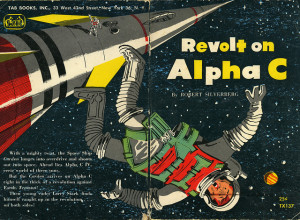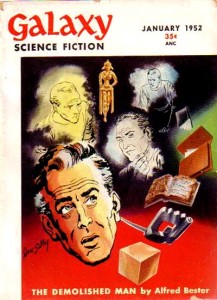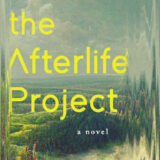
Today we are joined by Science Fiction and Fantasy Writers of America (SFWA) Grand Master Robert Silverberg. Mr. Silverberg writes speculative fiction that travels where he wants it to go, pushing aside the traditional limitations with which many writers confine themselves. He has written countless novels and works of short fiction, and his list of non-fiction books is staggering. Mr. Silverberg has been so prolific that his total word count rivals the quantity of stars in the galaxy.
Over his career, Mr. Silverberg has shown the ability to evolve as his muse guides him. He spent his early years helping to fill the pages of the pulp magazines that dominated the market, including his time as a staff writer with Amazing Stories.
The second leg of his writing career spanned the transition within the industry from the pulps into a more literary style. While some fell away, Mr. Silverberg stood at the front and helped lead the charge.
After an extended vacation from writing that stretched across several years, he returned with a vengeance, creating such masterworks as Lord Valentine’s Castle and Sailing to Byzantium.

Photo by Shawn McConnell
Mr. Silverberg has also excelled at editing, putting together one of the greatest collections of short fantasy the world has ever read. This list of names he collected in the anthology Legends includes Ursula K. Le Guin, Stephen King, Robert Jordan, and George R.R. Martin to name only a few.
Proof of his prolonged excellence can be found in his collection of awards which includes five Nebulas and four Hugos. His list of nominations is so long that scientists have considered using it as a pulley system to lift supplies from the surface of Earth to the International Space Station.
Mr. Silverberg has co-written novels with Isaac Asimov and has provided material for Hollywood. He previously served as president of the SFWA and is a member of the Science Fiction and Fantasy Hall of Fame. When not surfing the aftershocks in California, Mr. Silverberg spends his time unlocking the secrets of the ancients.
R. K. TROUGHTON FOR AMAZING STORIES: Welcome back to Amazing Stories, Mr. Silverberg. You attended Columbia University, graduating in 1956. While you were still in school, you published your first novel Revolt on Alpha C. In 1956, the ink on your diploma had not even dried, and you were being handed a Hugo for best new writer. Now I can imagine a few of us would be walking around campus with our chests puffed out if we had experienced such success. Please take us back to those college days and share with us what led to the publishing of your first novel and what life was like for you back then.
 RS: I was in my junior year at Columbia in January, 1954, when the Thomas Y. Crowell Company accepted REVOLT ON ALPHA C. I did tell some of my classmates that I had sold a book, but science fiction then was an insignificant publishing field and, at an Ivy League college like Columbia, not a particularly respectable one, so my classmates, although they congratulated me politely, were not terribly impressed. I got a more enthusiastic response from some of the faculty members, many of whom were would-be writers themselves and knew that it was no small thing to have a New York publisher agree to do a book of yours, science-fiction though it was.
RS: I was in my junior year at Columbia in January, 1954, when the Thomas Y. Crowell Company accepted REVOLT ON ALPHA C. I did tell some of my classmates that I had sold a book, but science fiction then was an insignificant publishing field and, at an Ivy League college like Columbia, not a particularly respectable one, so my classmates, although they congratulated me politely, were not terribly impressed. I got a more enthusiastic response from some of the faculty members, many of whom were would-be writers themselves and knew that it was no small thing to have a New York publisher agree to do a book of yours, science-fiction though it was.
ASM: You tasted your first success writing science fiction when the pulps were in full swing. The stacks and stacks of magazines required a never-ending stream of stories to fill them. The pulp editors were smart enough to recognize your talent and began publishing your stories as quickly as you could write them—and write them you did. The volume of your output during that time was simply amazing. Please give us a taste of what life was like in those chaotic pulp days and share with us how you traversed from a college student into one of the most widely published science fiction authors of the day.
RS: I was still an undergraduate when I began hitting my stride as a high-volume producer of pulp stories. By the summer of 1955, between my junior and senior years, I was selling stories every few days, and that continued all through my senior year and onward into my post-collegiate life. In achieving this I had great help from Randall Garrett, a writer six or seven years older than I was who moved into the building where I was living near Columbia. Garrett had sold some first-rate stories to most of the magazines of the period, but he was hampered by alcoholism and a lack of writerly discipline. Seeing in me a potential collaborator who would keep him hard at work, he took me downtown and introduced me to the major editors of the day—John Campbell of ASTOUNDING, Howard Browne of AMAZING, Bob Lowndes of the Columbia group of magazines, etc. At first in collaboration with Garrett, and then on my own, I became a valued contributor to the magazines these men edited, and to many others, too and, by the time I was 21, I was selling everything I wrote as fast as I could write it. (And that was plenty fast.) It was a wild, exciting time. I married my college girlfriend a couple of months after graduation in 1956, I moved into a lovely apartment on one of Manhattan’s best residential streets, and in the summer of 1957 I paid my way over to England to attend the first European Worldcon (with a side trip for us to Paris.) Before I quite understood what was happening I was living all of my adolescent fantasies—and I guess I have continued to live them ever since.
ASM: The second act of your career saw you transition out of the pulps into a period where you explored your literary roots. During this period you created many masterworks of fiction. Your novels were nominated for either a Hugo or Nebula (or both) every year from 1967 until 1973. In 1972, your peers nominated two of your novels for a Nebula. Your novel, A Time of Changes, received Hugo and Locus best novel nominations and received the Nebula Award. (We haven’t even touched on your short fiction.) Please tell us about this period of your career. What secrets did you unlock that produced such amazing results?
 RS: As I say in the autobiographical essay that accompanies my anthology SCIENCE FICTION 101, there really isn’t any secret, though I once thought there was. You read a lot, you write a lot, you live a lot, you think a lot, and by and by your work as a writer matures, unless, of course, it doesn’t. During that big period of my career there were editors everywhere begging me to write the best I had in me—whereas in the previous decade most of the editors wanted me to conform to their editorial policies—and of course I took advantage of the opportunity. It was a wonderful time to be writing.
RS: As I say in the autobiographical essay that accompanies my anthology SCIENCE FICTION 101, there really isn’t any secret, though I once thought there was. You read a lot, you write a lot, you live a lot, you think a lot, and by and by your work as a writer matures, unless, of course, it doesn’t. During that big period of my career there were editors everywhere begging me to write the best I had in me—whereas in the previous decade most of the editors wanted me to conform to their editorial policies—and of course I took advantage of the opportunity. It was a wonderful time to be writing.
ASM: For those not familiar with your award-winning novel, A Time of Changes, please tell us what we will find inside.
RS: The book is in print. Rather than my summarizing it here, I suggest going out and reading it.
ASM: Some of us can point to a single book, film, or event that birthed our interest in science fiction. What started your lifelong relationship with science fiction?
RS: I think it was my discovery of H.G. Wells’ THE TIME MACHINE when I was about ten, although Jules Verne’s TWENTY THOUSAND LEAGUES UNDER THE SEA, which is not quite as science-fictional as the Wells, set me on the path a couple of years earlier.
ASM: How old were you when you knew you wanted to be a writer, and what was the first thing you wrote?
RS: I was writing crude little stories when I was six or seven. I recall my Aunt Sylvie typing them out from my dictation, since I wasn’t much of a typist when I was six or seven. I went on writing all sorts of things after that, though I expected to be some sort of scientist when I grew up, and it wasn’t until a school guidance counselor said to me, when I was in the eighth grade, “You’re planning to be a writer, aren’t you?” that I realized that that was what I had had in mind all along.
 ASM: What authors most influenced you as a writer?
ASM: What authors most influenced you as a writer?
RS: Within the SFworld, Henry Kuttner, Jack Vance, Robert A. Heinlein, Robert Sheckley, Phillip K. Dick, Alfred Bester. The short stories of H.G. Wells were important, too. Among my mainstream sources were Faulkner, Fitzgerald, Hemingway, and—it’s a long story—the Greek tragedies.
ASM: After your assault on the awards’ lists in the late 60s and early 70s, you took some time off from writing. When you returned to writing, you introduced the world and all of your salivating readers to Lord Valentine’s Castle and the world of Majipoor. As we turned every page in anticipation, you exposed us to yet another facet of this jewel known as Robert Silverberg. How would you characterize this third act of your career, and how had you changed as a writer?
RS: In the early 1970s I had, like many other science-fiction writers, gone in for some degree of literary experimentation, pushing the boundaries of the field as far as I could. But science fiction is a category of commercial publishing, and the boundaries began to push back at me—the readers made it clear that they wanted more emphasis on storytelling than on experimentation. So I took a few years off to regroup and when I returned it was with a renewed emphasis on storytelling, notably in LORD VALENTINE’S CASTLE.
 ASM: For those who have not visited Majipoor, please tell us about the series and what we can find there.
ASM: For those who have not visited Majipoor, please tell us about the series and what we can find there.
RS: I wanted to create a wonderful world full of beautiful and surprising things—marvelous cities, strange plants and animals, glorious landscapes—and use it as the backdrop for an appealing and memorable story. I think I succeeded at that.
ASM: Amidst the strength of your writing, it sometimes gets lost that you are an editor too. I first stumbled across your Legends anthology while searching through my library’s catalog for books you had written. I was using an internet search tool, and when I saw the list of authors associated with the anthology, I assumed it was wrong. I thought someone had simply put all those names as tags to attract hits. The list of contributors to the anthology represents the pillars of modern fantasy: Stephen King, Robert Jordan, Terry Goodkind, Anne McCaffrey, Raymond E. Feist, George R.R. Martin, Orson Scott Card, Ursula K. Le Guin, Tad Williams, and Robert Silverberg. Even more stunning was that each provided you new works of fiction, not dusted off reprints. How did this anthology come about, and how did you harness the energy of so many greats into one collection?
RS: It was just an idea I had one morning—getting all the biggest fantasy writers to write novellas set in their famous worlds. Everyone I spoke to about it thought it was a terrific idea. But turning it into reality was a difficult job, one of the most difficult I’ve dealt with in my career. It was an exhilarating project, but also a lot of work. The writers were all enthusiastic, but some of their agents weren’t. They had never had such an offer before (several of the writers had never written anything short of huge multi-volume works, and anthology offers for such a thing as an individual story had never been an issue), and one agent even questioned whether I could be trusted to pay the royalties I offered. (I set him straight, rather indignantly.) One of the writers who had agreed to take part in the first volume found that he had no idea of how to write a short story, and had to be dropped from the book, which had serious consequences for the project. Then, too, some of the publishers were uneasy about having their star authors included in a book that would include other publishers’ star authors, and in two cases (one for each volume of LEGENDS) a publisher forced one of his writers to withdraw from this very lucrative enterprise. Several times it appeared that the whole thing would collapse, and only the heroic efforts of my agent, the late Ralph Vicinanza, held it together. I was very well paid for my pains, but after two experiences with LEGENDS I was, to put it mildly, unwilling to venture on a third, and when George R.R. Martin, who was eager to write a novella for LEGENDS THREE, asked me whether there would be such a book, I said that there wouldn’t be unless he edited it himself. Last time I looked, he hadn’t done so.
 ASM: During your evolution as an author you have studied and analyzed the craft of writing, teaching yourself the finer points needed to reach the pinnacle of your profession. In Robert Silverberg’s Worlds of Wonder (later retitled Science Fiction: 101) you have collected a group of science fiction stories that should be on everyone’s reading list. But this is not just an anthology; you have also added your own commentary to provide the reader a glimpse deeper into the story and into the craft of writing. Please tell us about the book and about your insight into the craft we will find there.
ASM: During your evolution as an author you have studied and analyzed the craft of writing, teaching yourself the finer points needed to reach the pinnacle of your profession. In Robert Silverberg’s Worlds of Wonder (later retitled Science Fiction: 101) you have collected a group of science fiction stories that should be on everyone’s reading list. But this is not just an anthology; you have also added your own commentary to provide the reader a glimpse deeper into the story and into the craft of writing. Please tell us about the book and about your insight into the craft we will find there.
RS: SCIENCE FICTION 101 is about to return to print under the auspices of Berkley Books, and I do agree that it should be on everyone’s reading list. It opens with a long autobiographical essay in which I set forth some of my own ambitions as a young SF writer and how I turned them into reality, and then presents thirteen short stories, by such writers as Kuttner, Bester, Sheckley, Dick, Vance, and James Blish, from which I was able to learn my craft. Each story is linked to a critical essay in which I discuss the virtues of the story and the particular technical aspects by which the writers created their powerful effects.
ASM: You have been publishing science fiction and fantasy for seven decades. How have the publishing and science fiction industries changed for better or worse during that time?

Photo by William Rotsler
RS: When I started, SF was dominated by magazines like ASTOUNDING and GALAXY, and SF in book form was very much a secondary affair. Each magazine published a variety of stories and no one story set the pace. Over the years the magazines dwindled and books became the core of the field, which meant each novel had to stand or fall commercially on its own merits, without the benefit of the sort of companion fiction that magazine publication provided. This, I think, ultimately produced intense emphasis on title-by-title mass-audience appeal, and I don’t think that that has been beneficial for the growth and development of science fiction.
ASM: During your career you have worked with many legendary editors and authors of science fiction. Who would you say had the biggest influence on your career?
RS: Horace Gold, the editor of GALAXY, was a fierce critic of my work, even while he was buying my stories. (This was in the late 1950s.) Horace was always urging me to aim higher, to write at the highest level I was capable of reaching, rather than to settle for the easy sale. About the same time, the writer Lester del Rey said the same thing to me—that I was selling everything I wrote, sure, but most of it was quick and facile stuff that would never merit reprinting, whereas if I took a little more time with my work I might earn less in the short run but the stories would go on being reprinted and read for decades. I took what they said to heart. At the same time, I was reading the ferocious critical essays of James Blish (“William Atheling, jr.”) and Damon Knight, who, to my relief, were usually tearing other writers’ work apart and leaving mine alone. It was my hope to write something someday that would live up to the lofty standards of these two critics, who were so very hard to please, and I like to think that ultimately I did.
ASM: Looking back at your career so far, what makes you most proud?
RS: That I was able not merely to earn a living through my writing but to write stories and novels that would have excited me as a reader in the days when I was young.
ASM: What projects are you working on now? What can we anticipate?
 RS: Nothing, I’m afraid. My eightieth birthday is not very far in the future and these days I’m relaxing, spending my time reading and traveling and working in my garden, writing no fiction at all. That could change in a minute if some project were put before me that I felt unable to refuse, but for the time being it’s a lot easier not to write than to go on adding to what is already an enormous bibliography. I’ve written as much science fiction as anybody ever did, over the last sixty years, and these days I’d rather take it easy. I have, however, been very busy making my work of all those years available via electronic publishing, and so there’s plenty of Silverberg material just a click away for the new generation of readers.
RS: Nothing, I’m afraid. My eightieth birthday is not very far in the future and these days I’m relaxing, spending my time reading and traveling and working in my garden, writing no fiction at all. That could change in a minute if some project were put before me that I felt unable to refuse, but for the time being it’s a lot easier not to write than to go on adding to what is already an enormous bibliography. I’ve written as much science fiction as anybody ever did, over the last sixty years, and these days I’d rather take it easy. I have, however, been very busy making my work of all those years available via electronic publishing, and so there’s plenty of Silverberg material just a click away for the new generation of readers.
ASM: Thank you for joining us today. We greatly appreciate the texture and color you have added to the tapestry of science fiction throughout your career. You are one of the absolute treasures of the industry. Before you go, is there anything else you would like to share with the readers of Amazing Stories?
RS: AMAZING was the first science-fiction magazine I read regularly, month after month, starting in 1948. That the magazine would be interviewing me about my career, 65 years later, is, well, pretty amazing.
Robert Silverberg











Recent Comments